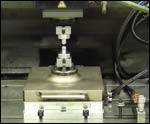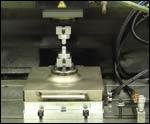Evaluating Mold Quality
Quality is the name of the game in manufacturing. It’s not just about quality products, it’s about quality processes—from receiving to shipping, TQM, QA, quality service and delivery. Every facet of the manufacturing process has been assigned standards and how well those standards are met is an indication of the quality of that particular product, process or service. Quality products require quality materials, processes, equipment and tooling—specifically in the case of injection molded parts, quality molds.
In an educational seminar prior to an ISO certification effort, a training instructor recounted the story of a quality guru telling a group of automotive executives that they were going to produce a zero defect car. After the predictable response of smirks and snorts, “Alright,” he said, “how many defects are enough? Do you want to make a three defect car? What if we produce one with only two defects, how will we decide which defect to add so that we can maintain our standard of producing three defect cars?”
The point of this story is probably not lost on anyone: quality is not synonymous with perfection. Toss that supposition and then we can realistically start to discuss quality in quantifiable terms. Quality is that which meets the standard and lives up to expectations. In the case of injection molds, what would pass as a quality mold for one application would not be at all acceptable for another because the expectations are different.
In the process of setting standards for evaluating mold quality there are three main categories: design, materials and workmanship. The first two lend themselves to objective evaluation while the third can become a subjective assessment that may be no more than the expression of a personal preference. That being said, the critiquing of workmanship is not to be totally dismissed.
Before delving into these areas there is one over-arching consideration: price. The cost of a mold can only be justified (paid for) by amortizing it over the life of the tool and every part it produces. Is the expected volume of parts to be produced by the mold 100,000 or one million? With higher volumes, better quality can be justified.
Compare the following scenarios.
| Cost of mold | $80,000 | $100,000 |
| Volume | 100,000 parts | 1,000,000 parts |
| Burden | $.80 per piece | $.10 per piece |
In the example above, 25 percent more spent to buy a higher quality tool is an easy pill to swallow when it is viewed in terms of price per piece. Also the additional cost is warranted because ostensibly a higher quality mold equates to less repair downtime, resulting in lower maintenance cost.
Design
A mold that is thoroughly thought-out and designed with both function and maintenance in mind is well on its way to being a quality mold. But what is quality design? We cannot fairly discuss design quality without taking into consideration complexity and materials. For the sake of simplicity, let’s work off of the statement designed with both function and maintenance in mind. Let’s group all issues of complexity, cavitation, parting lines and resin under Function and accessibility/serviceability, components and materials under Maintenance.
Designed with Function in Mind
Painting in these broad strokes, a mold designed with function in mind will not only produce parts that meet the functional expectations of the customer, but also suit the functional needs of the molder as well. From a molder's perspective, there are numerous criteria that need to be addressed.
- Is the mold a good fit for the press that it runs in or does it have to be modified?
- Startup. Does it take hours of tweaking and coaxing to get good parts or do you get good parts after four or five cycles?
- If the parts drop to a bin or conveyor, do they fall consistently or do they shoot off like bottle rockets only to get lost under the press?
- Is there robotics involved and are the parts oriented to be easily removed?
- Is there sufficient daylight for your preferred EOA tooling?
- What happens to the runners? Do they fall free of the mold or get caught on lifters or cores and present the risk of parting line damage by clamping up on debris?
- Are the hydraulic, water and electrical connectors standard for your operation or are there different styles for different molds?
The discussion of function could even be extended to include the consideration of secondary operations. The number of cavities, the orientation of the parts and even some latitude in the design of the part may affect downstream processes. Do the parts nest together well, do they have alignment features designed into them, do the engagement snaps function easily or do they have to be forced?
Designed with Maintenance in Mind
A mold designed with maintenance in mind is one that has an auto disassembly switch mounted on the side. All joking aside, a mold designed with consideration for those who have to maintain it should at a minimum have the following features.
- A sufficient number of handling holes so the mold can be manipulated safely.
- Should sit on the bench without being blocked up with an assortment of wood scraps to keep it level and steady.
- Should have all components clearly identified.
- Should not have to be completely disassembled to remove replaceable cores or inserts. There should be access holes through the clamp and ejector plates, so components can be replaced without requiring a complete tear down.
- Pinch blocks should, when possible, be removable from the parting line for service.
- Molds that run different configurations require extra thought so that change-overs can be accomplished with minimal downtime.
Another consideration that impacts the frequency and cost of maintaining a mold is whether or not the mold has any self-destructive design features. Molds with slides that have to be properly sequenced in order to avoid damage are an accident waiting to happen. An insufficiently trained or careless setup tech can make all the difference between a weekend off and day of overtime.
Lifter design (prepare for a personal rant): a lifter head that extends far enough to expose the lifter pocket seems to mysteriously create a vacuum that sucks uncontrolled runners in specifically for the purpose of damaging a mold. (Go ahead, call me a conspiracy theorist.)
Off-the shelf components are another feature of molds designed with maintenance in mind. In the early days of moldmaking, shops couldn’t call a major distributor and order ejector pins, leader pins and bushings, so they made their own. The catalog of readily available mold components continues to grow, yet you can still occasionally see the design work of an engineer who tried to reinvent the wheel. Ingenious designs are awe-inspiring when they solve difficult mold action problems, but short of necessity they can be very costly in terms of maintaining a mold. Catalog components are consistent and inexpensive.
Materials
The discussion of mold maintenance goes hand in hand with debates about the materials used in mold construction. Here is where people involved in mold maintenance occasionally lose sight of the big picture. The question here is not whether the best possible materials were used, but rather were the materials selected sufficient to the expectations of the tool?
Again, here are the extremes to frame the issue. An aluminum prototype mold may make perfectly acceptable parts, but probably not a million of them. A mold expected to make a few hundred thousand parts wouldn’t necessarily have to have hardened inserts with replaceable cores made of wear-resistant material. Just as there are Yugos and Lamborghinis and everything in between on the road and each meets the expectations of the owner, there is a spectrum of molds from cheap prototypes to top-of-the-line molds with the best materials, closest tolerances and best heat and surface treatments available from which to choose.
Generally, materials selection should follow industry standard practice and usually come down to a balance between cost/preference.
Workmanship
A toolroom supervisor once complained to a corporate tooling engineer about the “pitiful” workmanship of a mold made overseas: “We would never accept that kind of work from a domestic toolmaker.” To which the tooling engineer adroitly replied, “Sure we would if it made acceptable parts.” He was right, of course. The supervisor hated the mold because it looked like a piece of junk, but it produced acceptable parts for the customer.
The evaluation of workmanship can be subjective, but not totally dismissed. One aspect of workmanship that is not subjective is standardization. Ely Whitney figured out that standardization equated to interchangeability, which facilitated both mass production and repair. The mold complaint mentioned above was a horror case in terms of standardization, in a four-cavity mold with two slides per cavity, one would have expected four identical copies of two slides, but instead there were two different slide designs for each slide. One of the slides even had a different center-to-center dimension for the return spring holes! Without any apparent reason, the center lines of the cavities were offset by an eighth or an inch. The grease control divots had different patterns on each slide. There were core pins that were indexed for no reason and the ones that needed to be indexed were not done uniformly. Some pins had index flats parallel to PL and some were perpendicular. The ejector pins that were indexed were worse yet, some were indexed with flats, others with dowel pins and still others with roll pins! The ejector pin counter bores were of different depths with the depth compensated for by using spacers that were not attached or numbered. The point here is that standardization allows the toolroom to stock minimal amounts of replacement tooling and saves the time that would have to be spent to make multiple variations needlessly.
Attention to Detail and Standard Practices
This leads to another aspect of quality workmanship namely attention to detail and the following of standard practices. A short list of details requiring attention would be something like:
- Core and cavity inserts should be identified with steel type and hardness information in case there is ever a need for weld repairs.
- All core pins, ejector pins, gibs, wear plates, etc. should be numbered both on the component and in the location it is fit to.
- All sharp edges should be deburred and chamfered for safe handling.
A builder who fails to pay attention to these no brainers obviously has no concern for the poor guy who may have to repair the tool someday, even if it may be the builder himself! These types of workmanship practices are an advertisement that speaks volumes about the builder. One who has paid attention to the details you can see is not likely to leave drill chips packed in the cooling channels where you can’t see.
Summary
Thinking through the issue of mold quality serves two purposes. First, the practice of distilling nebulous wants into concrete expectations is a good discipline that will help ensure that:
- The mold purchased will meet your needs.
- That the competing quotes are all quoting the same work by eliminating assumptions.
- That mold builds go smoothly and delivery dates can be met.
- That costs can be controlled by eliminating or at least reducing hiccups, rework and engineering changes caused by oversights.
In short, doing your homework allows you to make an informed purchase—i.e. only purchasing what you need and getting what you paid for. None of this is new material. Those in the business of buying molds have learned this; otherwise they wouldn’t still be in the business.
By this point you’re probably thinking to yourself, “Well, we’ve defined mold quality but, we haven’t evaluated anything.” Yes and no. The definition and evaluation go hand-in-hand. The mere practice of evaluating implies a standard and the setting of a standard requires adherence that must be proven by evaluation.
This is the second purpose of thinking through the issue of mold quality. Verifying compliance to the standard will help to ascertain that the mold will fulfill the requirements and is an aid in determining the practices and preventive maintenance frequency necessary to ensure that the tool will perform adequately as long as necessary.
It’s at this point that there seems to be a disconnect. The expectations defined by the purchasing group rarely, if ever, get conveyed to the mold maintenance group. Therefore, the default conclusion is that the mold will be expected to last forever.
Obviously every mold represents a major investment and should be well cared for. The problem is that over-maintaining a mold is an unproductive waste of valuable time that could and should be spent maintaining other molds. If the mold techs understand that the mold will be expected to 20,000 parts a year, but do it for 20 years, they probably should set up a different preventive maintenance routine than they would for a mold that is expected to make million parts a year for the next two years. Again with the extremes, but you get the point.
Preventive maintenance is expected to protect molds against unscheduled downtime from the twin enemies: wear and environment. Both of these should be taken into consideration in the process of setting expectations, and should in turn, be communicated to the toolroom, so they can make informed decisions about how to best maintain a mold, so it will fulfill expectations.
Related Content
Confronting the Mold Design Talent Drought
Recently, I reposted on LinkedIn the results of an informal survey we conducted, which revealed a shortage of skilled mold designers. It quickly gained a lot of traction. Given the response, I thought I'd summarize the feedback and keep the conversation going.
Read MoreHow to Use Continuing Education to Remain Competitive in Moldmaking
Continued training helps moldmakers make tooling decisions and properly use the latest cutting tool to efficiently machine high-quality molds.
Read MoreHands-on Workshop Teaches Mold Maintenance Process
Intensive workshop teaches the process of mold maintenance to help put an end to the firefighting culture of many toolrooms.
Read MoreHow to Improve Your Current Efficiency Rate
An alternative approach to taking on more EDM-intensive work when technology and personnel investment is not an option.
Read MoreRead Next
Team Approach Is Key to Proper Inspection
Using a group rather than one person and changing the order of inspection is a win-win for this moldmaker—repeatable results with no rework.
Read MoreAre You a Moldmaker Considering 3D Printing? Consider the 3D Printing Workshop at NPE2024
Presentations will cover 3D printing for mold tooling, material innovation, product development, bridge production and full-scale, high-volume additive manufacturing.
Read MoreHow to Use Strategic Planning Tools, Data to Manage the Human Side of Business
Q&A with Marion Wells, MMT EAB member and founder of Human Asset Management.
Read More





















